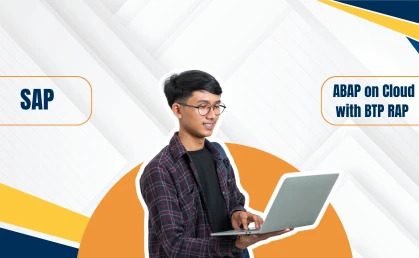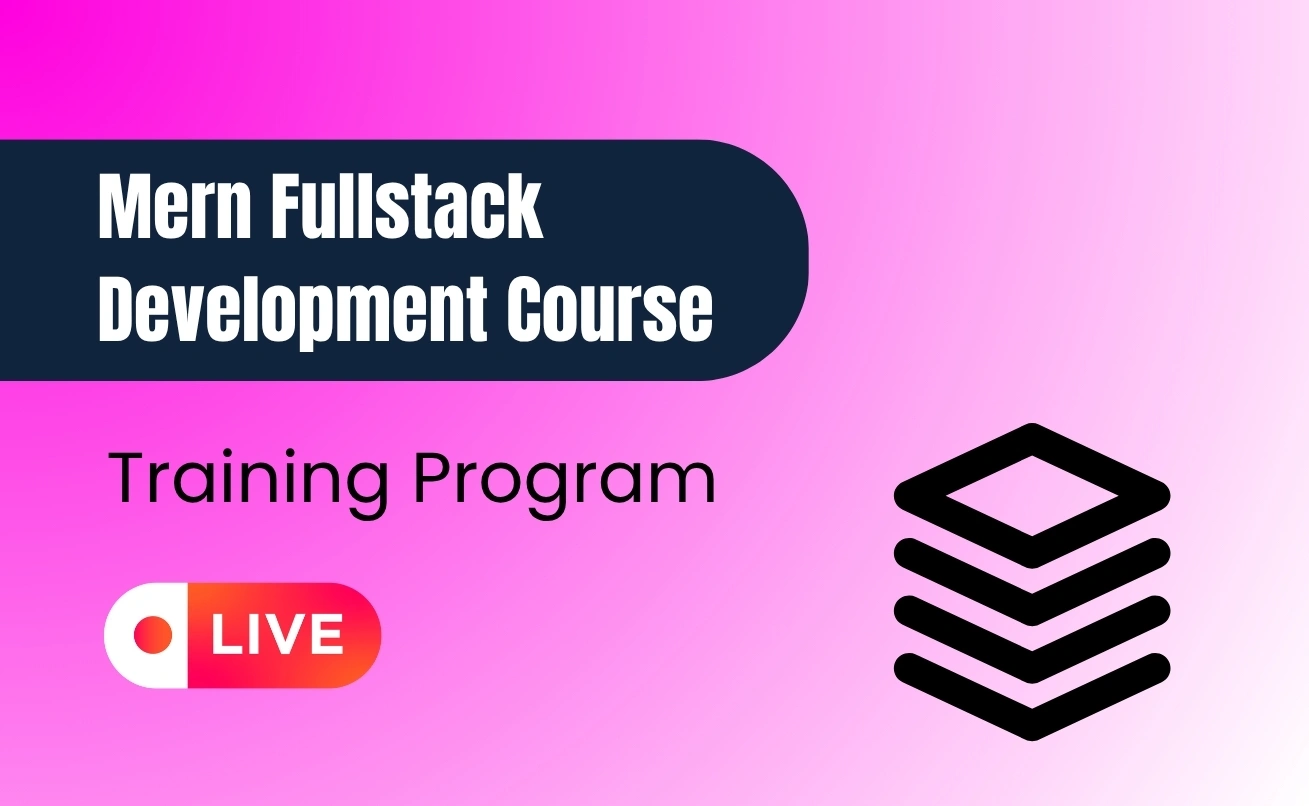MERN Full Stack Developer Course Online – Learn to Build Complete Web Applications
The world is changing to online, and companies need skilled developers who can make powerful websites and apps. If you want to become one of them, the MERN Full Stack Developer Course Online is the best option. MERN stands for MongoDB, Express.js, React.js, and Node.js, four latest tools that help you make both the front-end and back-end of apps.
With our MERN stack full course online, you can learn from anywhere, anytime. You don’t need to be an expert in coding to join the course. This MERN stack developer course is made step by step so even freshers can understand easily. By the end of this MERN stack development course, you will be able to make, develop, and create complete apps on your own.
What is MERN Stack Development?
When these four tools are used together, they allow a developer to create a complete web app, from making the front-end user interface that people see, to building the back-end system that makes the website work, and even managing the database where information is stored.
MERN Full Stack Development Course online is all about using JavaScript to build websites and apps. It includes four powerful technologies:
- MongoDB – A database to store information.
- Express.js – A framework for back-end development.
- React.js – A group for creating unique front-end designs.
- Node.js – A runtime for creating server-side apps.
Why Choose a MERN Stack Full Course Online?
Learning online gives you freedom and flexibility. With the MERN stack full course online, you can:
- Learn at your own speed, from anywhere in the industry.
- Get access to recorded sessions and live mentorship classes.
- Work on real world projects to get practical knowledge.
- Connect with industry experts and trainers anytime.
Why is the MERN Stack developer course online the best option?
Learning a MERN Stack Developer Course online is one of the best choices for anyone who wants to build a career in web development. The MERN stack course online— which includes MongoDB, Express.js, React.js, and Node.js — is one of the most popular technologies used to create modern, fast, and dynamic websites and apps. When you choose to learn it online, you get flexibility and comfort.
You can study at your own pace, attend live classes, or watch recorded sessions whenever you want. This makes it perfect for students, working professionals, or beginners who want to balance learning with other responsibilities.
In short, learning the MERN Stack Developer Course online is the best option because it gives you the freedom to learn anytime, gain practical experience, save money, and prepare for high-paying web development jobs — all from the comfort of your home.
Who Can Join the MERN Stack Developer Course?
The MERN full stack developer course online is perfect for:
- Students who want to learn coding early.
- Fresh graduates who want to get into IT jobs.
- Working professionals planning a career switch.
- Freelancers looking to take up client projects.
- Entrepreneurs who want to make their own web apps.
Whatever your background, this MERN full stack development course online is made to be simple, easy, and beginner friendly.
What Will You Learn in the MERN Stack Full Course Online?
When you join a MERN Stack full course online, you learn everything you need to become a complete web developer. You’ll start by learning the basics of web development — how websites work, what front-end and back-end mean, and how to connect them together. Then, you’ll move on to each part of the MERN stack — MongoDB, Express.js, React.js, and Node.js.
In the beginning, you’ll learn HTML, CSS, and JavaScript, the foundation of all websites. You’ll practice how to structure web pages, style them, and make them interactive. Once you’re comfortable with the basics, you’ll dive into React.js, which is used to build fast and modern user interfaces.
Next, you’ll explore Node.js and Express.js, which are used for backend development. Here, you’ll understand how servers work, how to handle user requests, and how to create APIs that connect your front-end to your database. You’ll also learn about MongoDB, a database that stores information like user data, products, and messages.
In addition to these core topics, most online MERN stack course online also teach you how to host your web apps on platforms like GitHub, Vercel, or Netlify. You’ll learn version control using Git, which helps you manage your code easily.
Career Opportunities After MERN Stack Development Course
After completing the MERN full stack developer course online, you can explore many high-paying and in-demand job roles, such as:
- MERN Stack Developer
- Front-End Developer like React.js
- Back-End Developer like Node.js + Express.js
- Full Stack Web Developer
- Web Application Developer
- Freelance Developer
With these skills, you can work with top companies or even start your own projects. Many MERN full stack development companies are hiring fresh talent, and this course prepares you to stand out.
Why Learn MERN Stack Development with Srijan
Institute?
At Srijan Institute, our MERN stack full course online focuses on practical learning. Instead of just theory, you will build real-world applications step by step. The trainers at Srijan are industry experts who have years of experience in web development. They teach you not only the technical parts but also how to solve real-world problems like a professional developer.
Srijan Institute learning environment is friendly and motivating. You’ll get to interact with other learners, share ideas, and work on exciting group projects.
Here’s what makes our course special:
- Beginner-friendly – Simple lessons for easy understanding and learning.
- Hands-on projects – Learn by creating apps like online sites, blogs, and dashboards.
- Expert trainers – Industry experts help you in your career.
- Career help – Resume building, interview prep, and placement help.
- Certification – Receive a recognized MERN stack developer course certificate.
By the end of the program, you’ll be ready to work with any MERN full stack development company or even start your own freelancing career.
MERN full Stack Development Course Roadmap
If you want to become a MERN Stack Developer, it’s important to follow a clear roadmap. The MERN stack is made up of MongoDB, Express.js, React.js, and Node.js, and each part plays a key role in building full web applications. This roadmap will help you understand what to learn step by step — even if you are a beginner.
- Learn the concepts of HTML, CSS, and JavaScript.
- Learn React.js for front-end systems.
- Learn Node.js and Express.js for back end systems.
- Connect MongoDB for storing user data.
- Build complete full stack projects.
- Deploy apps on cloud platforms.
- Prepare for interviews and jobs.
MERN Stack Development Services and Freelancing
One of the best things about learning through the MERN full stack developer course online is that you can also give MERN stack development services as a freelancer. Many companies want developers who can create websites and apps. With these skills, you can work with international companies, work as a freelancer, or even create your own tech startup.
Some learners even start their own small MERN stack development company after gaining enough experience.
Conclusion
The MERN Full Stack Developer Course Online is the best way to start your career in web development. It covers everything you need—from MongoDB to React, and makes you a job-ready full stack developer. With the MERN stack full course online at Srijan, you don’t just learn—you build real projects, gain confidence, and open doors to a bright future. Join today and become a skilled MERN Stack Developer ready for the digital world.
The fee for MERN Stack training can vary depending on several factors such as location, duration of the course, training format, and level of expertise. Various training options for MERN Stack Web Development are available, including instructor-led courses, e-learning courses, and virtual live classrooms.
For more details, you can Register/Sign Up.
MERN Stack Web Development certification is a professional credential that validates an individual’s knowledge and skills in using the MERN stack (MongoDB, Express.js, React.js, and Node.js) to build dynamic, full-stack web applications. The certification assesses a candidate's ability to develop applications, implement server-side logic, manage databases, and create user interfaces that enhance user experience.
The certification program is offered at various levels, such as Beginner and Advanced. The Beginner level certification tests foundational knowledge of web development concepts, including basic JavaScript, React.js for front-end development, and Express.js for server-side programming. The Advanced level certification is aimed at professionals with experience in creating complex web applications, working with RESTful APIs, and deploying applications using cloud services.
To prepare for the MERN Stack Web Development certification, candidates are advised to participate in official training programs, study for at least six weeks, and gain hands-on experience through real-world projects. Practical exposure to the MERN stack components, along with tools like Git for version control and cloud platforms for deployment, is key to success in the certification exam.
1.What is new in ES6
- What is Classes
- About let and const
- What is Arrow functions and Enhanced Object Literals
- About Destructuring and Spread Operator
- Define Generators and Iterators
- Symbols and Comprehensions
- Async Programming
BUILDING UI USING REACT.JS
- Why use React.js
- Virtual DOM Benefits
2: JSX: View Components
- Syntax of JSX
- How to create view classes using JSX
- How to generating views without using JSX
- Precompilation of JSX
- How to utilizing JSX in the server
3: Models
- Immutability benefits
- Utilizing Immutable.js
4.Components
- Life-Cycle : Componenet
- About Virtual DOM
- Events : Component
- How to using States and Properties
- How to Initializing States from properties
- Using refs : Accessing DOM nodes
- About Synthetic Events
- Compositions : Component
- About Communication Between Components
- About Reusable Components
5.Forms?
- Controlled and Uncontrolled Components
6. ReactLink?
- Principle of One-Way Data Binding
- Principle of Two-Way Data Binding
7.Manipulation of Node.js and Server DOM
- About Animations
- Helpers : DataBinding
- Helpers : Immutability
- Helpers : Performance
8.FLUX AND REDUX ARCHITECTURE?
- Intoduction of Reactive programming
- Uni directional data flow Advantages
9. Brief about Architecture?
- How to Building blocks in Flux
- Define Dispatcher and Stores
- Action and Views
10. About Dispatcher?
- Principle of dispatcher
- How to Registering callbacks
- About Triggering Actions
10. .Store?
- Role of Store
- How to Maintain Application State
- Define Event Broadcasting
11.Brief about Reducer
- Generating Actions
- How to Dispatching actions to the dispatcher
- How to Dispatching Async Actions
- Utilizing Middlewares
14..About Views
- About React Components as Views
- Define State Subscribers
- How to Updating data from the store
15.React-Redux Bindings
- Using “Connect” : Binding Components to React Store
- Using Provider : Injecting Redux Store
- Utilizing Providers with React Routers
16.About Server Side Rendering &Brief about Testing
- Using Mocha & Chai : Organizing Test Code
- Utilizing Test for mocking dependencies
- About Testing Stores
17.WEBPACK
- Introduction of Module Bundling
- Define Installation
- How to generating Webpack configuration
- About Setting up webpack-dev-server
- Define Configure automatic browser refresh
- About Loading Modules
- Optimizing rebundling of react components
- Utilizing Less/Sassloaders
- About Hot loading components
18.Node JS
- Node.js framework
- Installing Node.js
- Node.js to execute scripts
19.Node Package
- Node Package Manager
- Package.json configuration file
- Global vs. local package installation
20.Shrink-wrap to lock the node modules versions
- Learn NPM Vet
- Outdated command
21.Asynchronous programming
- Callback functions
- Promises
- Using Request module to make api calls
22.HTTP Server with Node.JS using HTTP APIs
- Building an HTTP server
- Rendering a response
- Query strings
23.File System
- Synchronous vs asynchronous I/O
- Dirname and Filename
24.Buffers Streams and Events
- Flowing vs non-flowing streams
- Streaming I/O from files and other sources
25.Multi Processing in NodeJS
- Child Process API
- Cluster API for multi-core servers
26.ExpressJS
- Defining Jade templates
- Postman configuration
- JSON Data
- POST data
- Adding middleware
27.Express JS with MongoDB and Sqlite
- RDBMS databases and NoSQL databases
- Performing CRUD operations
28.Socket.io, Front-end and Chat App
- Adding Socket.io To Your App
- Explore Front-end
- Sending Live Data Back & Forth
- Front-end UI
- Timestamps
- Chat application Project
29.Intro to Task Managers with unit testing
- Child Process API
- Cluster API for multi-core servers
Q1. What is MERN Stack Web Development, and what are its main components?
A1: MERN Stack Web Development is a web development framework that uses four key technologies: MongoDB, Express.js, React.js, and Node.js. The main components include:
- MongoDB: A NoSQL database for storing application data.
- Express.js: A web application framework for Node.js that simplifies the development of web applications.
- React.js: A JavaScript library for building user interfaces, primarily for single-page applications.
- Node.js: A JavaScript runtime that allows developers to execute JavaScript code on the server side.
Q2. What is a business model in the context of MERN Stack development, and why is it important?
A2: A business model in the context of MERN Stack development outlines how an application will create, deliver, and capture value using the technologies. It is important because it defines the application's purpose, target audience, and revenue streams, guiding development efforts.
Q3. What is the role of a business intelligence tool in MERN Stack development?
A3: In MERN Stack development, a business intelligence (BI) tool helps analyze application data and present actionable insights. It enables developers to create dashboards and visualizations that aid in monitoring application performance and user engagement.
Q4. What is the difference between front-end and back-end development in the MERN stack?
A4: Front-end development in the MERN stack involves building the user interface and user experience using React.js, while back-end development focuses on server-side logic, database interactions, and API creation using Node.js and Express.js.
Q5. What is a data pipeline in MERN Stack applications, and how does it work?
A5: A data pipeline in MERN Stack applications refers to the processes that manage data flow between MongoDB and the application. It involves data extraction, transformation, and loading (ETL) to ensure that data is efficiently stored, retrieved, and used within the application.
Q6. How do you build a simple dashboard using the MERN Stack?
A6: To build a simple dashboard using the MERN Stack:
- Set up the server using Node.js and Express.js to handle API requests.
- Connect to MongoDB to store and retrieve data.
- Use React.js to create the dashboard's front-end components.
- Fetch data from the server using Axios or Fetch API and display it in the dashboard.
- Make the dashboard interactive with charts and graphs using libraries like Chart.js or D3.js.
Q7. What is data visualization in the context of MERN Stack applications, and why is it important?
A7: Data visualization in MERN Stack applications involves representing data graphically to facilitate better understanding and insights. It is important because it helps stakeholders quickly grasp complex data trends, improving decision-making processes.
Q8. What is cross-validation in the context of MERN Stack applications?
A8: Cross-validation in MERN Stack applications refers to the practice of validating the performance of machine learning models integrated into applications. It involves splitting data into training and testing sets to ensure that the model generalizes well to new data.
Q9. What is the difference between performance metrics and application metrics in MERN Stack development?
A9: Performance metrics in MERN Stack development track the efficiency and speed of the application (e.g., load times, API response times), while application metrics monitor user engagement and behavior (e.g., active users, session duration).
Q10. What is variance analysis in the context of MERN Stack applications?
A10: Variance analysis in MERN Stack applications compares actual application performance against expected performance metrics. It helps developers understand discrepancies in application behavior and identify areas for improvement.
Q11. What is data mining, and how is it applied in MERN Stack applications?
A11: Data mining is the process of discovering patterns and insights from large datasets. In MERN Stack applications, it is applied to analyze user behavior, optimize features, and enhance marketing strategies.
Q12. What is a regression model, and how is it used in MERN Stack applications?
A12: A regression model predicts the relationship between variables, often used for forecasting. In MERN Stack applications, it can be used to analyze trends in user data or sales to inform future development and marketing efforts.
Q13. What is a balanced scorecard in the context of MERN Stack development?
A13: A balanced scorecard is a performance management tool that tracks key performance indicators (KPIs) related to MERN Stack applications. It helps developers align development efforts with business goals and measure application success.
Q14. What is A/B testing, and how is it used in MERN Stack applications?
A14: A/B testing involves comparing two versions of an application feature to determine which performs better. In MERN Stack applications, it helps optimize user experience and improve conversion rates by testing changes in the UI or functionality.
Q15. What is time series analysis in the context of MERN Stack applications?
A15: Time series analysis involves examining data points collected over time. In MERN Stack applications, it can be used to analyze user activity trends, sales data, or performance metrics to make informed predictions.
Q16. What is big data, and how is it relevant to MERN Stack development?
A16: Big data refers to large volumes of data that require advanced processing methods. In MERN Stack development, handling big data can help applications scale efficiently and provide insights from vast datasets for better decision-making.
Q17. What is anomaly detection, and how does it help MERN Stack applications?
A17: Anomaly detection identifies unusual patterns or outliers in data. In MERN Stack applications, it helps detect issues like fraud or system failures early, enabling developers to take corrective actions promptly.
Q18. What is customer segmentation analysis, and why is it important in MERN Stack applications?
A18: Customer segmentation analysis involves grouping users based on shared characteristics. In MERN Stack applications, it allows developers to tailor features and marketing strategies, enhancing user experience and engagement.
Q19. What is churn analysis in the context of MERN Stack applications?
A19: Churn analysis predicts which users are likely to stop using the application. In MERN Stack applications, it helps developers identify at-risk users and implement strategies to improve retention.
Q20. What is data governance, and why is it critical for MERN Stack applications?
A20: Data governance involves managing data quality, availability, and security in applications. For MERN Stack applications, it is critical to ensure compliance with regulations, protect user data, and maintain the integrity of the application.
Participants will have 24/7 access to our online lab, providing hands-on experience with MERN stack tools and scenarios.
This includes server access to MongoDB, Express.js, React.js, and Node.js for 1 year, ensuring ample time to practice and apply your skills in a real-world environment.
With this extended access, you can work on projects, explore advanced web development features, and solidify your understanding of the MERN stack using the latest technologies.
0
Satisfied Students0
Years of Excellence0
Practical TrainingCourse Certification
MERN Stack Web Development certification is a professional credential that validates an individual’s knowledge and skills in using the MERN stack (MongoDB, Express.js, React.js, and Node.js) to build dynamic, full-stack web applications. The certification assesses a candidate's ability to develop applications, implement server-side logic, manage databases, and create user interfaces that enhance user experience.
The certification program is offered at various levels, such as Beginner and Advanced. The Beginner level certification tests foundational knowledge of web development concepts, including basic JavaScript, React.js for front-end development, and Express.js for server-side programming. The Advanced level certification is aimed at professionals with experience in creating complex web applications, working with RESTful APIs, and deploying applications using cloud services.
To prepare for the MERN Stack Web Development certification, candidates are advised to participate in official training programs, study for at least six weeks, and gain hands-on experience through real-world projects. Practical exposure to the MERN stack components, along with tools like Git for version control and cloud platforms for deployment, is key to success in the certification exam.
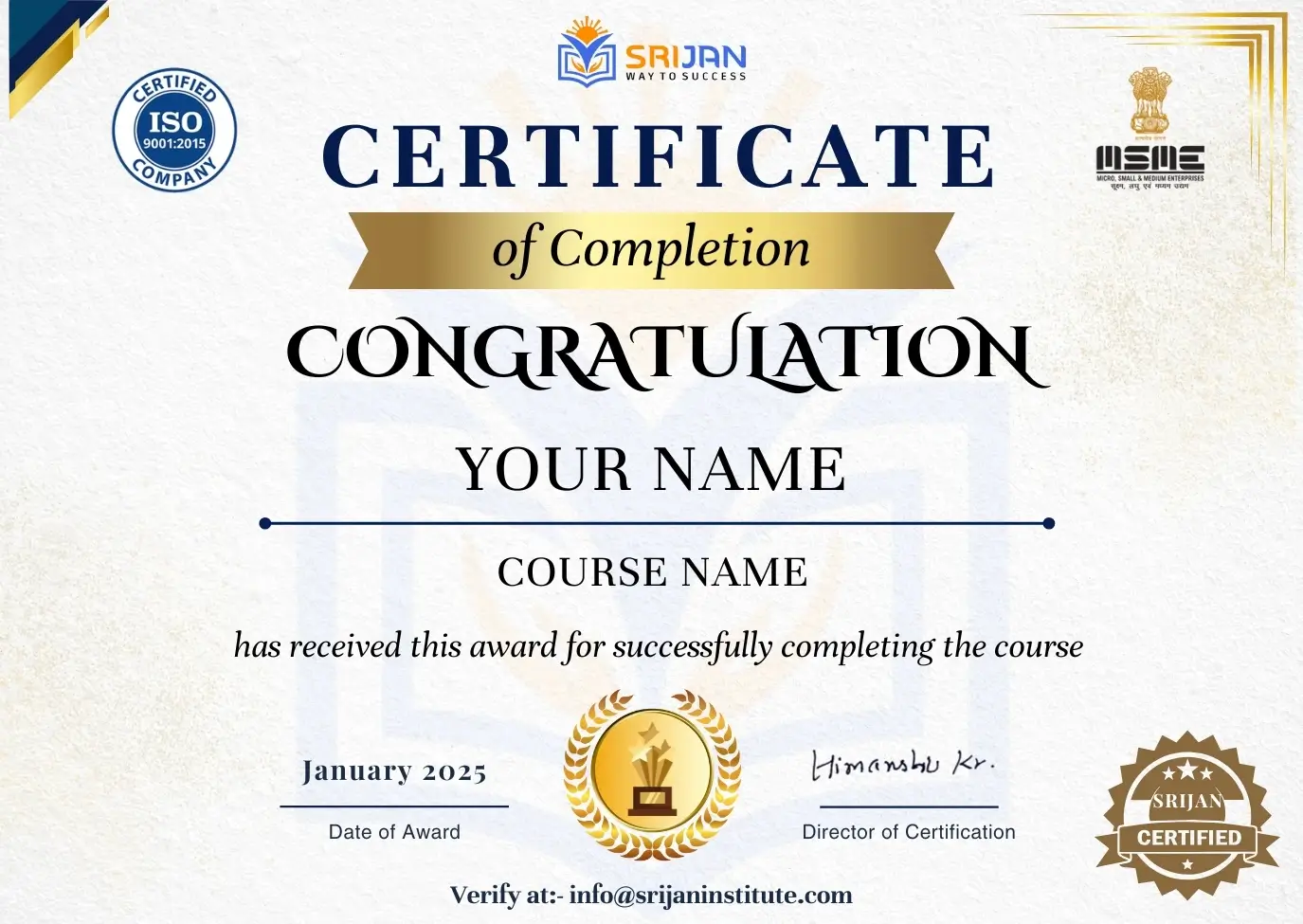
Our Hiring Partners
Our Popular Instructors
Meet our most talented and popular instructors

Mr. Manoj Pandey
SAP| MM| EWM|Ariba|erSAP Global Certified|SAP Consultant

Mr. Amrit Raj
Full Stack SAP Developer CUM ABAP On HANA Trainer | SAP BTP Developer | Full Stack Developer | ERP & Data Science| SAP Global Certified

Mr. Sudheer Sharma
SAP| FICO|Trainer|SAP Consultant

Priyanshu Panday
SAP Basis and Security Consultant

Buddhi Vishwas
SAP HCM and SAP Successfactor Consultant | Payroll | RCM | Employee Central
Choose Your Mern Full Stack Developer Course Learning Plan
Pick the Mern Full Stack Developer Course batch that best fits your schedule—ongoing, upcoming, and recorded options.
- First Batch Start Date: 11th November 2025
- Second Batch Start Date: 25th November 2025
($270)
- First Batch Start Date: 9th December 2025
- Second Batch Start Date: 23rd December 2025
($270)
Learn at Your Own Pace
Self Paced Videos
Learn anytime, anywhere with our curated recorded courses
Mern Full Stack Developer Course FAQs
Yes. Our MERN full stack developer course is designed for beginners, covering the basics before moving to advanced concepts.
Some JavaScript knowledge is helpful, but not mandatory. Even if you’re new, the MERN stack full course online ensures you can start from scratch and build confidence step by step.
Absolutely. Our MERN full stack course online includes real-world assignments and a capstone project to help you apply concepts practically.
Yes, we provide resume building, mock interviews, and job placement support to help you land your dream role, afetr completing Mern Full Stack Developer Course.
Level Up Your Skills with Our Mern Full Stack Developer Course Today!
Unlock Your Career Potential with Our Mern Full Stack Developer Course and Start Learning Today and Gain the Skills Employers Demand!



